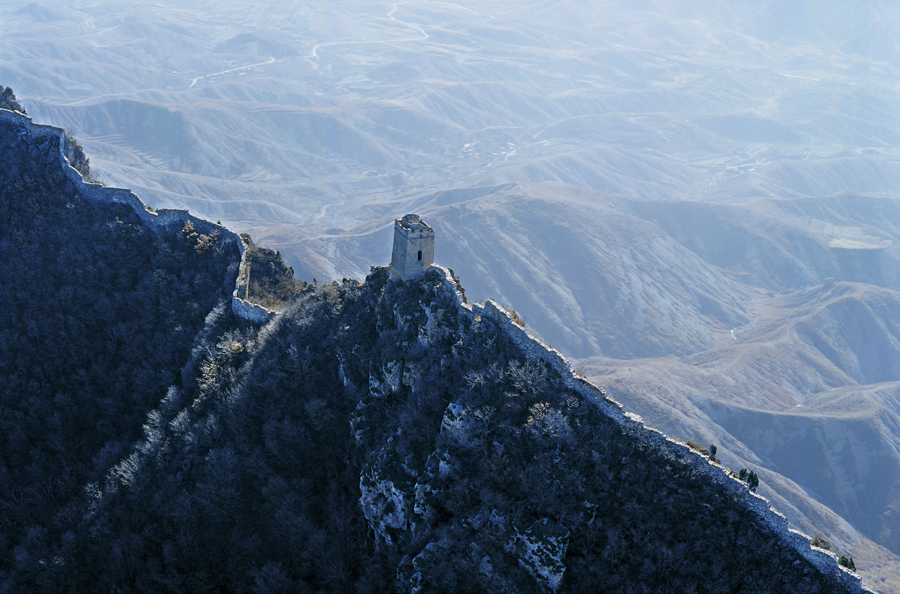 |
|
The Simatai section of the Great Wall Ma shot in 2005. [Photo provided to China Daily] |
Ma has taken aerial pictures of the central axis on a few occasions, but his most impressive images were taken separately in 2013 using a large-format camera and in 2017 using a medium-format camera. These images appear in the media from time to time.
According to him, the presence of the central axis and the thought behind the historically symmetrical urban planning is very clear when viewed from 100 meters above.
Modern architecture like the well-known Bird's Nest (China's National Stadium), Water Cube (the National Aquatics Center), the Olympic Park Observation Tower and the Olympic Forest Park built in the north of the city and the recently opened new airport in the south have all inherited and expanded the urban planning philosophy of the central axis.
In terms of density, height and structure, the appearance of these new structures and the nearby landscaping seem harmonious with their surroundings when the central axis area is viewed as a whole and remain consistent with its cultural legacy-even if some of the buildings were once deemed controversial, Ma says.
The 59-year-old came to Beijing from his hometown in Henan province in 1978. As a member of the engineering corps, he worked on the construction of the Second Ring Road and the Jianguomen Overpass in particular, as well as subway lines and a renewal project for urban water systems.